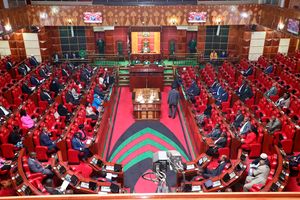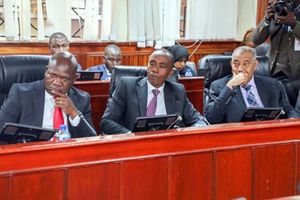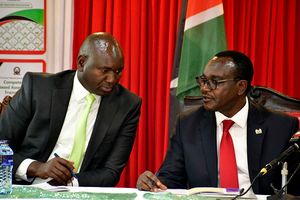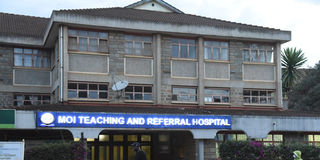
Moi Teaching and Referral Hospital in Eldoret, Uasin Gishu County.
Revenue collected from hospitals by county governments has tripled to Sh18 billion in the financial year ending June 2024, a report by the Controller of Budget shows.
In the previous year, counties had generated only Sh6 billion from health facilities.
The increment is attributed to a shift in July 2023 that allowed county governments to directly collect and reinvest funds from hospitals, a move aimed at strengthening healthcare services and advancing Universal Health Coverage.
"Out of the overall Sh58.95 billion collected as locally generated income in counties, Sh18 billion was collected from health facilities, which accounted for at least 30 percent of the total Own Source Revenue," says the report concerning the year ending June 2024.
"During the period, counties generated Sh58.95 billion as their Own Source Revenue (OSR), which was 72.8 percent of the annual target of Sh80.94 billion. The OSR was an improvement from Sh37.81 billion generated in the financial year 2022/2023," further revealed the report.
During the period some of the counties that generated huge amounts from local health facilities included Mombasa, which collected Sh 1.12billion of the total Sh5.58 billion generated as Own Source Revenue in the devolved unit, Nairobi which collected Sh1.07 billion out of the total Sh12.54 billion generated, Nakuru which raised Sh1.47 billion out of the total Sh3.32 billion revenue and Kiambu which generated Sh1.2 billion from its facilities.
Others were Baringo (Sh181.6 million ), Bomet (Sh80.6 million), Bungoma (Sh681.4 million), Busia(Sh136 million), Elgeyo Marakwet (Sh177.6 million), Embu (Sh329.7 million), Garissa (Sh151.9 million), Homabay (Sh841.2 million), Isiolo (Sh94.4 million), Kajiado (Sh370 million), Kakamega (Sh546.6 million) Kericho (Sh482.2 million), Kilifi (Sh472.2 million), Kirinyaga (Sh233.5 million), Kisii (Sh683.2 million), Kisumu (Sh603.3 million), Nyamira (Sh220.8 million) among others.
The report indicates that revenue generated by counties from health centres rose from Sh6 billion in the 2022/23 financial year, significantly boosting the devolved units' OSR.
The increase followed the rollout of the Facilities Improvement Fund (FIF), established after the enactment of the Facilities Improvement Financing Act, in July 2023.
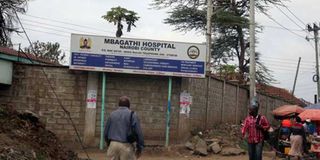
Nairobi's Mbagathi Hospital.
The law allowed the management of public health facilities to retain all the money they raise or receive for the improvement of services and facilities.
The FIF allows county governments to collect funds from primary health centres and reinvest them into the same facilities.
A similar report by the Parliamentary Budget Office (PBO) further reveals that the FIF greatly boosted revenue collection in the devolved units.
"The operationalisation of the FIF has been very successful, with the counties collecting Sh18 billion in OSR from the health sector in the 2023/24 financial year, compared to Sh6 billion in the financial year 2022/23," reads the report.
"This is an indication of the potential counties have when provided with appropriate incentives."
The FIF was introduced as part of President William Ruto’s healthcare reforms aimed at promoting Universal Health Coverage (UHC).
The fund is supported by user fees collected from local health facilities, along with other financial sources, and is intended to develop primary healthcare facilities, particularly in rural areas.
The Act that established the fund also introduced measures to ensure more secure and accountable management of funds, preventing county treasuries from reclaiming unspent money from the kitty. The system is designed to strengthen local healthcare infrastructure, reinforcing efforts to achieve universal health coverage.
However, the parliamentary expert group behind the report has recommended additional financial support for FIF.
It suggests that at least 40 per cent of the funds allocated to the Sports, Arts, and Social Development Fund (SASDF) — which finances sports, social projects, and UHC—should be directed towards the FIF to enhance its impact.
The PBO further urged the government to ensure that the newly formed Social Health Authority (SHA) adheres to the requirement of settling claims within 90 days, particularly for primary healthcare facilities, to support their efficient operation.


